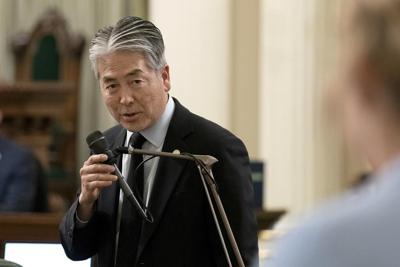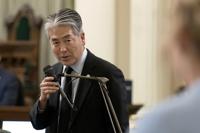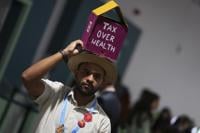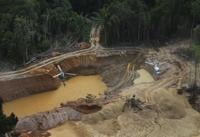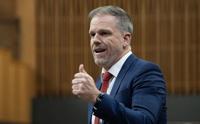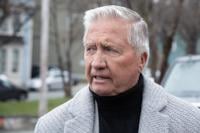SACRAMENTO, Calif. (AP) — Mired in a stream of multi-billion dollar budget deficits, the California Legislature on Wednesday turned to voters for help.
Lawmakers voted to place a pair of $10 billion bonds on the November ballot. If approved, the money would pay for the building of new schools and help communities prepare for the impacts of climate change.
California was swimming in money as budget surpluses totaled well over $100 billion through the pandemic. But the state to cover deficits totaling more than $78 billion over the past two years as revenues declined amid rising inflation and an economic slowdown in the state's pivotal technology industry.
Money from the bonds would backfill some of those cuts, plus pay for a slew of priority projects up and down the state for years to come.
But the money isn't free. The climate bond alone will cost taxpayers more than $19 billion to pay off, with annual payments of $650 million per year, putting more pressure on the state's finances.
With Gov. Gavin Newsom meeting with President Joe Biden and fellow Democratic governors in Washington, Senate President Pro Tempore Mike McGuire signed the bills into law as acting governor, capping a raucous evening session of the Legislature that was disrupted multiple times by Israel-Hamas war protesters.
Asking voters for permission to borrow large sums of money is always risky, particularly when doing it multiple times in the same election.
In addition to the two statewide ballots, voters will likely be asked to approve hundreds of local borrowing proposals — including a for the nine counties that surround the San Francisco Bay.
Recent history suggests voters are tiring of these bonds.
In 2020, despite a history of approving statewide school bonds, voters rejected a $15 billion education borrowing proposal — what would have been the largest in state history. And earlier this year, voters only authorizing the state to borrow more than $6 billion to help house the homeless — a result widely seen as a warning for lawmakers who were considering taking on more debt.
“I would have thought that the razor-thin margin on Proposition 1 would be a wake-up call on these ill-defined bonds,” said Jon Coupal, president of the Howard Jarvis Taxpayers Association. “Whether it comes to education homelessness or climate, California citizens perceive that they are not getting value for their dollar.”
Supporters say voters are savvy enough to recognize the great need that will be filled — most school facilities are built with a combination of state and local money. But demand for state dollars is so great that there's a waiting list of projects worth more than $3 billion, according to Democratic Assemblymember Al Muratsuchi, who sits on the committee that approves the funding.
“Why do you go to the voter? You go to the voters to do investments that move us ahead that single allocations from the budget can’t afford,” Democratic state Sen. John Laird said.
Much of the climate bond would go to improve water supply and help prepare for wildfires. Statewide, nearly 400 water systems . Meanwhile, 15 of the 20 most destructive wildfires in state history have occurred in the past decade. are getting longer and more severe, placing public safety at risk, and intense winter storms have caused damaging floods in recent years.
“It's something that's more tangible for people here and more real because they’ve seen it so much,” said Melissa Romero, deputy legislative director for California Environmental Voters, an advocacy group that supports the bond.
Negotiations over the education bond have been ongoing for nearly two years, and the final result did not please everyone. Money from the bond would only apply to public schools and community colleges, excluding the University of California and the California State University systems.
Plus, some advocacy groups say the bond would benefit wealthier school districts at the expense of poorer districts — something they say has been a persistent problem with the state's program of funding school facility construction.
“It would continue the status quo, with some nominal equity adjustments that really won’t address the underlying issue,” said Nicole Gon Ochi, deputy managing attorney for Public Advocates, a nonprofit law firm and advocacy group.
Muratsuchi said the bond would make it easier for districts to qualify for the state's financial hardship program and would help districts with fewer resources navigate the complex process of applying for state grants.
Concerns about the climate bond center on whether $10 billion is enough to make a difference and whether the money will be distributed fairly across the state. Democratic Assemblymember Jasmeet Bains was one of the few lawmakers to oppose the bond for that reason.
Democratic Assemblymember Eduardo Garcia noted that “difficult decisions needed to be made” given the competing priorities for limited funding.
“We also had to consider the dynamics of what voters and members of this House would support,” he said.

